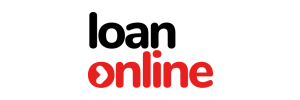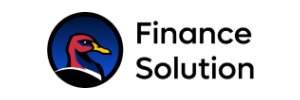Loans up to ₱ 22,000
Understand the essentials of taking out loans up to ₱ 22,000. Whether you’re seeking a quick financial boost or managing unexpected expenses, these loans provide a practical solution. Evaluate the repayment terms and ensure they align with your budget to make the most informed decision. This section sets the stage for what’s to come, guiding you through the steps of navigating these financial options in the Philippines.
| Company | Loan amount | Term of Loan | Age Limit | Apply | |
|---|---|---|---|---|---|
 | 500 - 25000₱ | 61 days | 🆓 0% interest to new customers! | Apply for a loan | |
 | 500 – 25000 ₱ | up to 180 days | 🆓 First loan for FREE | Apply for a loan | |
| No applications with TIN, PAGIBIG, or Postal ID | |||||
 | 1000 – 50000 ₱ | up to 365 days | 🆓 First loan free of charge | Apply for a loan | |
 | 1000 – 20000 ₱ | 61 days | 🆓 First 7 Days with 0% Interest! | Apply for a loan | |
 | 500 – 25000 ₱ | up to 365 days | 🔥 The best offer today! | Apply for a loan | |
 | 500 – 25000 ₱ | up to 135 days | ⏱️ Disbursed in 5 minutes | Apply for a loan | |
 | 2000 – 25000 ₱ | 62 – 360 days | 🆓 First loan for FREE | Apply for a loan | |
 | 1000 – 50000 ₱ | 🆓 First loan for FREE | Apply for a loan | ||
 | 1000 – 25000 ₱ | 91 – 365 days | ✅️ Most approved | Apply for a loan | |
 | 1000 – 25000 ₱ | up to 1800 days | Apply for a loan | ||
 | 500 - 25000 ₱ | 61 – 365 days | Apply for a loan | ||
 | 500 – 25000₱ | 91 - 180 days | Apply for a loan | ||
 | 1000 – 25000 ₱ | 61 – 365 days | Apply for a loan | ||
 | 1000 – 50000 ₱ | 91 – 365 days | Apply for a loan | ||
 | 1000 – 25000 ₱ | 61 – 180 days | Apply for a loan | ||
 | 1,000 - 25000₱ | 61 - 120 days | 🆓 First loan for FREE | Apply for a loan | |
 | 1000 – 25000 ₱ | 62 – 120 days | Apply for a loan | ||
 | 1000 – 25000 ₱ | 61 – 120 days | 🆓 First loan for FREE | Apply for a loan | |
 | 1000 – 30000 ₱ | up to 180 days | Apply for a loan | ||
 | 1000 – 25000 ₱ | 61 days | Apply for a loan | ||
APR (annual percentage rate) can vary from 0% to 143%. The loan duration is between 62 days and 20 years. Representative example: If you borrow ₱100.000 to return in 13 weeks, you will repay ₱124.725,87 in weekly installments of ₱9.594,29 (APR 143%). This is a service to find and compare loan and credits. The conditions depend on the financial company, product, amount and loan duration.
Benefits of choosing smaller loans
Smaller loans bring several advantages for borrowers. They provide flexibility in managing finances, allowing one to handle unexpected expenses without overwhelming debt. Managing repayments becomes simpler, reducing the stress of juggling large amounts each month. These loans can also aid in building a positive credit history if managed well. Choosing smaller loans can help maintain financial stability, ensuring you’re not over-committed. With lower amounts, you generally face less stringent approval processes, making access to funds quicker and easier. This is an ideal option for those needing immediate but manageable financial support.
Common criteria for loan approval
Securing a loan in the Philippines typically requires meeting specific criteria. These may vary by lender, but some common requirements are usually seen across the board. Applicants generally need to demonstrate their creditworthiness and stability to get approval.
Basic qualifications
To qualify for a loan, you need to meet a few basic prerequisites. First, you must be at least 21 years old and not older than 65 upon loan maturity. Being a Philippine resident with a valid ID is also essential. A steady income source, whether from employment or business, often needs proving through payslips or bank statements. These qualifications help lenders assess your ability to repay.
Planning your loan repayment
Managing loan repayment can be a challenge. To lessen the burden, it is vital to plan wisely. Setting clear goals and understanding your financial standing is a good start. This way, you stay in control and avoid unnecessary stress.
Creating a repayment schedule
To create an effective repayment plan, follow these steps:
- Assess your monthly income and expenses to determine available funds.
- Prioritize loan payments above non-essential expenses.
- Break down your repayment amount into manageable monthly portions.
- Consider setting up automatic payments to avoid late fees.
- Review and adjust the plan every few months to stay on track with your goals.
Risks of borrowing money
Taking a loan might seem like a quick fix for financial issues, but it’s important to understand the potential dangers. Unmanageable debt can occur if you borrow more than you can repay, leading to financial strain. Interest rates can increase your debt significantly, especially if you miss payments. Additionally, borrowing can affect your credit score negatively, making future financial opportunities more difficult. Always assess your needs and repayment ability before committing to a loan.
The role of credit score in loan approval
In the Philippines, having a good credit score can greatly influence loan decisions. Lenders use it to gauge how reliable you are in repaying borrowed money. A high score often leads to easier approval and better loan terms. On the flip side, a low score might mean higher interest rates or even rejection. Thus, maintaining a strong credit profile is important if you’re eyeing loans up to ₱22,000.
Alternatives to traditional loans
Traditional loans might not be suitable for everyone. Fortunately, there are different options available. Consider peer-to-peer lending, which connects borrowers directly with individual lenders. This can sometimes offer better rates and more flexibility. Another option is reaching out to friends and family for a loan. This can be less formal and offer a more personal touch, but it’s important to manage expectations and agreements clearly to avoid misunderstandings.
Non-traditional options
Exercise caution when exploring less conventional lending avenues, as they may carry higher risks or variable terms.
Some other options include payday loans, pawnshops, or online platforms that don’t require traditional credit checks. These can provide quick cash but often come with higher interest rates or fees.
Key factors affecting loan interest rates
Interest rates for loans can vary widely. Several factors influence these rates, starting with the borrower’s profile. A strong credit history often attracts lower interest rates. Lenders view borrowers with good credit as less risky, which can translate to better loan terms. However, if the credit score is low, expect higher rates.
Market conditions also play a crucial role. When the economy is thriving, interest rates tend to rise as lenders find more opportunities. Conversely, during an economic downturn, rates might drop to stimulate borrowing and spending. Understanding these elements can help you make informed decisions when considering loans up to ₱ 22,000.
